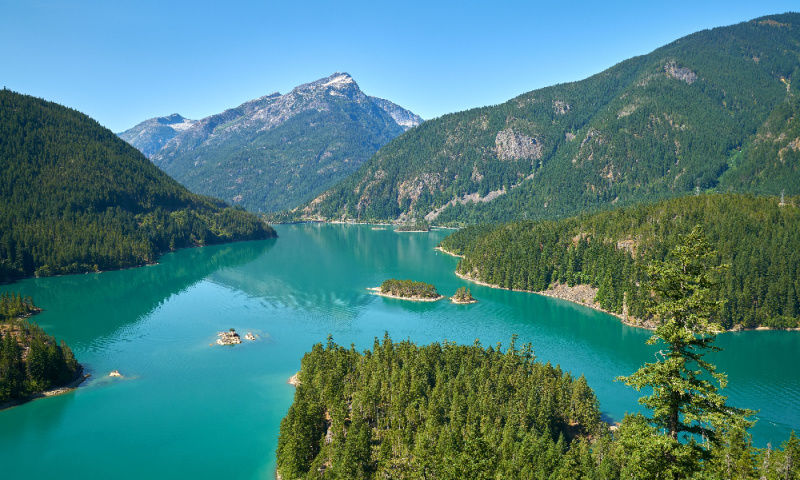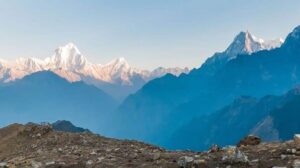The Evergreen State: A comprehensive overview of Washington’s natural beauty

Nestled within the embrace of the Pacific Northwest lies a tapestry of breathtaking landscapes. They beckon those seeking solace in nature’s embrace. From the majestic peaks of the Cascades to the serene shores of Puget Sound, the natural beauty of Washington is nothing short of awe-inspiring. Beyond being renowned for its tech hubs and urban allure, Washington boasts some of the best places to live in the country. Here, city life seamlessly blends with the tranquility of the outdoors.
Its diverse terrain ranges from lush forests to tranquil lakes. Washington offers an unparalleled haven for outdoor enthusiasts and nature lovers alike. The state’s numerous national parks and wilderness areas provide a playground for hikers. Imagine waking up to the gentle rustling of leaves in the morning breeze. Or witnessing the sun’s golden kiss as it dips behind the rugged mountains.
As you explore the enchanting communities nestled amidst this natural splendor, you’ll discover that the best places to live in Washington seamlessly weave together a sense of community with the surrounding environment. Whether you’re drawn to the artistic vibrancy of Seattle or the small-town charm of Leavenworth, each place is an ode to the state’s captivating landscapes.
Unique natural wonders of Washington
In a beautiful world, Washington stands out as a canvas that Mother Nature has artfully splashed with her most vibrant and unique hues. This corner of the United States holds an impressive collection of natural wonders that could make even the most seasoned traveler drop their jaw in awe. Let’s see some of the unique natural wonders that Washington has to offer.
1. Mount Rainier
Mount Rainier is a stratovolcano, a type of volcano characterized by its conical shape. It has alternating layers of lava, ash, and debris. Standing at an impressive 14,417 feet above sea level, it is the tallest peak in the Cascade Range. The mountain is part of the Pacific Ring of Fire. It is an area prone to volcanic and seismic activity due to the movement of tectonic plates. Mount Rainier’s distinct silhouette and towering presence make it a must-see for anyone visiting the Pacific Northwest.
Mount Rainier offers many activities for visitors to enjoy. During the warmer months, hiking trails wind through subalpine meadows adorned with colorful wildflowers. The Wonderland Trail, a 93-mile circuit around the mountain, offers a unique opportunity to experience the region’s diverse ecosystems and changing landscapes.
Winter transforms Mount Rainier into a snow-covered wonderland. It draws skiers, snowshoers, and snowboarders to its slopes. The Paradise area is a popular winter destination. It boasts excellent opportunities for snow play and stunning views of the mountain.
2. Diablo Lake
With its mesmerizing turquoise waters, rugged mountain surroundings, and rich history, Diablo Lake offers visitors an unforgettable experience of natural beauty and cultural significance.
Named after the nearby Diablo Dam, the lake owes its distinctive color to the glacial silt that flows into it from the surrounding glaciers. The lake radiates brilliant shades of blue-green as the sunlight dances upon the surface. This striking hue and the towering peaks and dense forests create a picture-perfect backdrop for outdoor enthusiasts, photographers, and nature lovers.
The history of Diablo Lake is closely intertwined with the development of hydroelectric power in the region. The Diablo Dam, completed in the 1930s, was a significant feat of engineering at the time. It played a crucial role in providing electricity to the Pacific Northwest. Today, visitors can explore the area’s history at the North Cascades Visitor Center. It features exhibits and information about the dam’s construction and its impact on the local community.
3. Hoh Rainforest
With its captivating beauty, unique ecosystem, and biodiversity, the Hoh Rainforest is a prime example of nature’s mastery and a must-visit destination for enthusiasts and curious travelers.
The Hoh Rainforest is characterized by its emerald-green foliage, towering trees, and a sense of serenity that envelops all who venture into its depths. Annual rainfall in the region averages around 140 to 170 inches. It creates an almost mystical environment, shrouded in mist and drizzles. This rainfall contributes to the impressive growth of the towering Sitka spruce and western hemlock trees that dominate the landscape. Some of these giants are estimated to be over 300 feet tall and several centuries old.
The rainforest’s unique climate and abundant moisture provide an ideal habitat for a diverse range of flora and fauna. Mosses and ferns blanket the forest floor. They create a lush carpet that seems almost otherwordly. Delicate trillium flowers, vibrant wildflowers, and striking fungi burst from the damp earth. They add a splash of color to the otherwise green-dominated palette.
4. Columbia River Gorge
Carved over millennia by the powerful forces of the Columbia River, this stunning canyon stretches over 80 miles. It marks the boundary between Washington and Oregon.
A haven for outdoor enthusiasts, the Columbia River Gorge offers many activities to engage in and sights to behold. Hiking trails wind through lush forests. They lead visitors to breathtaking viewpoints overlooking the river. The iconic Multnomah Falls, plunging nearly 620 feet, is one of the most visited attractions in the area. It captivates all who gaze upon its cascading waters.
The Columbia River Gorge is also renowned for its unique microclimate. It fosters a diverse range of flora and fauna. The Gorge is home to various plant species. Many adapted to the distinct environment created by combining the river’s calm waters and the surrounding dry terrain. This unusual mix has given rise to a remarkable array of ecosystems. They make the Gorge a prime location for botanists and nature enthusiasts.
5. Palouse Falls
Located within the Palouse River Canyon, Palouse Falls cascades dramatically from over 200 ft. It creates a mesmerizing display of water plunging into a pristine turquoise pool below. The falls have been sculpted over millions of years. The relentless flow of the Palouse River is carved through layers of ancient basalt. It reveals the captivating landscape we witness today.
The allure of Palouse Falls extends beyond its striking visual appeal. The surrounding area is a haven for nature enthusiasts. It offers various activities such as hiking, birdwatching, and photography. Trails wind through the rugged canyon. They provide opportunities to explore the diverse flora and fauna that call this unique ecosystem home.
Conclusion
The state of Washington stands as a breathtaking testament to the captivating beauty of nature. Its diverse landscapes offer an awe-inspiring display of scenic wonders. Verdant forests, pristine lakes, and cascading waterfalls paint a picturesque tapestry. They leave a lasting impression on all who venture into their embrace. Washington’s natural beauty reminds us of our world’s remarkable diversity and splendor. It makes it a destination that truly captures the essence of Mother Nature’s artistry.




